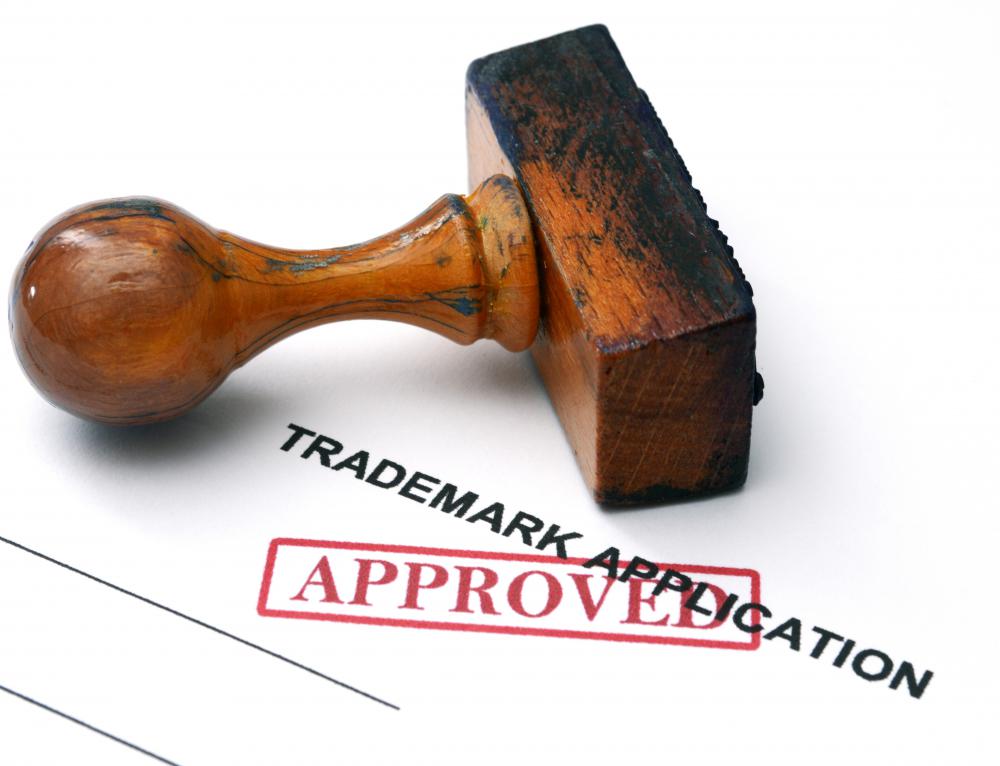At WiseGEEK, we're committed to delivering accurate, trustworthy information. Our expert-authored content is rigorously fact-checked and sourced from credible authorities. Discover how we uphold the highest standards in providing you with reliable knowledge.
What is Trademark Infringement?
Trademark infringement is a violation of the rights held by a trademark, without any authorization from the owner or licensee of the trademark itself. Trademark infringement is dependent on the trademark laws of the region in question, and what might be a trademark infringement in one jurisdiction would not be in another. One of the major tasks many international financial regulatory bodies take on is the management of trademark law, to try to ensure that trademark infringement is punishable in all major markets, to reduce the chances of a trademark being diminished anywhere on the planet.
The key to determining whether trademark infringement has occurred in the United States is whether or not a confusion can be said to exist by use of a similar or identical trademark. Trademark infringement occurs when one party uses something that can be shown to cause confusion with something that another party holds a trademark to. This does not necessarily have to be an identical term, but it does have to be close enough that it is possible to demonstrate a strong likelihood of confusion.

Since determining confusion could be somewhat problematic, from the purely logistical stance of having to discover whether a broad mass of consumers was concerned, the courts have come up with a set of criteria to determine whether trademark infringement has occurred. One famous set of criteria was laid down by the Ninth Circuit Court of Appeals in 1979, and includes eight distinct points: the strength of the mark, the proximity of the goods, the similarity of the mark, any evidence of real confusion, marketing channels, the types of goods and how much care a consumer is likely to take, the infringer’s intent, and the likelihood that the product lines will be expanded.
For example, let us imagine I owned a small business, which I named Bob’s Really Good Widgets. I spent years building up brand recognition and a strong mark, I distributed coupons in the paper every week, and ran radio ads repeating the name of the store over and over again. Let us now imagine that someone opened a store three blocks down, which they also named Bob’s Really Good Widgets. At this point, it is fairly apparent that they are engaging in trademark infringement, since they’re use of an identical name is likely to rob me of clients.
On the other hand, let us imagine I owned a business called Dirty, and that we sold dirt bikes in Colorado. If another person were to start a business called Dirty in California that sold moisturizer, it is very likely that trademark infringement would not be taking place. In fact, if I only sold dirt bikes in a small town in Colorado, and didn’t advertise widely, another company could likely start a company with the same name, also selling dirt bikes in California, without engaging in trademark infringement, because our companies are far enough away, and my reach is limited enough, that there is very little chance of customer confusion.
To a different extreme, there are some brands that are so powerful that even businesses in completely unrelated fields, on the other side of the country, could still be considered trademark infringement. This is because of a concept called trademark dilution, in which a company can show that any company using their trademark, even when the chance of confusion is very low, would still cause the value of their trademark to diminish. This tends to hold true only for the very largest of brands, such as Apple™ or Tide™.
AS FEATURED ON:
AS FEATURED ON:











Discussion Comments
As ideas of human beings are naturally similar, close, proximate, duplicated or even the same, infringement of trademarks is inevitable if it is considered in one way or one side or any one angle.
i want to start trademarking my ideas for future products. i.e. company x doesn't yet produce this thing, but when they do they will want to name it for -my already trademarked name!
Post your comments